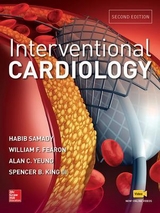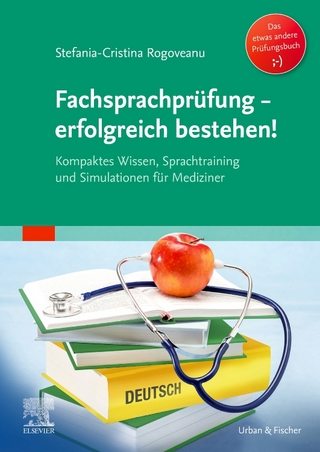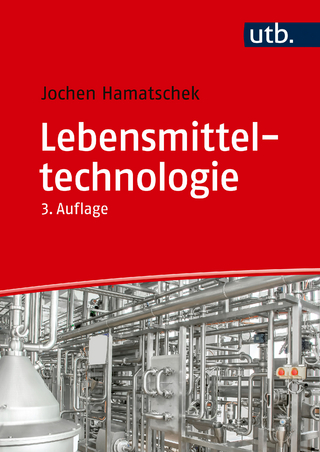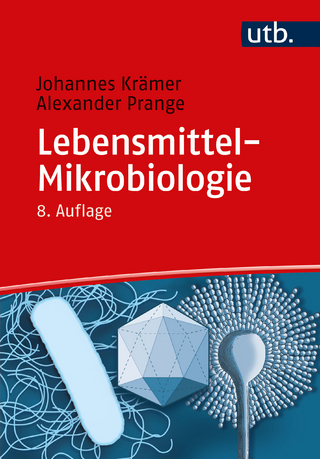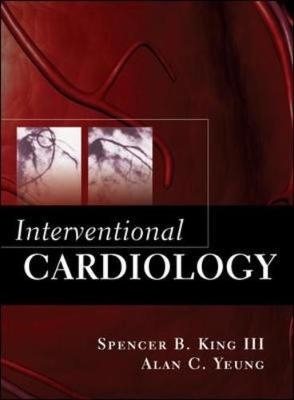
Interventional Cardiology
McGraw-Hill Medical (Verlag)
978-0-07-141527-9 (ISBN)
- Titel erscheint in neuer Auflage
- Artikel merken
The first-ever primer for the cardiovascular interventionalist - filled with up-to-date procedural advice! 4 Star Doody's Review! "This is a one-of-a-kind textbook for fellows in training and practicing interventionalists...This is an excellent and comprehensive book that fills a need for information on procedural techniques and avoidance of complications. It will be a welcome addition to the interventionalist's library." (Doody's Review Service). Filling a crucial gap in procedural knowledge, this groundbreaking reference is the first to focus on interventional cardiovascular procedures. The book includes a full section on procedures as well as chapters on the necessary scientific foundation, to which specialists will refer every day in their clinical practice. In addition, each procedural chapter is loaded with valuable tips and pitfalls from an internationally recognized group of experts. Interventional Cardiology starts with a useful look the relevant anatomy, physiology, and pathophysiology for interventional cardiology.
It then covers the principles of the catheterization laboratory and its equipment plus pharmacology before moving on to a step-by-step review of individual procedures and other pertinent topics. The comprehensive coverage of the book is highly accessible thanks to a well-organized full-color format that synthesizes important information and provides a consistent template in describing each procedure. Throughout the book, charts and tables help to summarize key concepts and can serve as the basis for a detailed overview. Features: a first-of-its-kind, in-depth survey of procedural skills for interventional cardiology-edited by two of the foremost experts in the field, and featuring contributions from key opinion leaders in interventional cardiology; top-to-bottom coverage of the latest interventional cardiology techniques; valuable perspectives on avoiding and properly managing complications; up-to-date information on devices; and an extensive illustration program with four-color images and figures throughout.
Spencer B. King, III, MD Director, Interventional Cardiology Emory University School of Medicine Atlanta, GA Alan Yeung, Head, Division of Cardiovascular MedicineDirector, Interventional CardiologyStanford University School of MedicineStanford CA 94305US
Contributors Foreword Preface AcknowledgmentsPart 1. Knowledge Foundation Section 1. Anatomy for Interventional Cardiology 1.Coronary Artery Anatomy for the Interventionalist 2.Cardiac Chamber Anatomy 3.Peripheral Anatomy for the InterventionalistSection 2. Physiology 4.The Coronary Circulation 5.Physiological Evaluation of Renal Artery Stenosis: A Hemodynamic ApproachSection 3. Pathophysiology 6.Valvular Pathophysiology 7.Arterial Disease 8.Ventricular Pathophysiology Part 2. Equipment: Construction and Performance 9.Equipment for Percutaneous Coronary Intervention 10.Design and Construction of Stents 11.Adjunctive Devices: Atherectomy, Thrombectomy, Embolic Protections, IUVS, Doppler, and Pressure Wires Part 3. Principles and Catheter Laboratory Equipment 12.X-Ray Cinefluorographic Systems 13.Operational Radiation Management for Patients and Staff 14.General Principles of Coronary Artery Brachytherapy 15.X-Ray Computed Tomography and Magnetic Resonance Imaging of the Coronary Arteries 16.Intracardiac Echocardiography in the Catheterization Laboratory 17.Cardiac Catheterization Laboratory Physiologic Recorders 18.Digital Image Formats and Archiving Practices Part 4. Pharmacology 19.Antithrombin Therapies 20.Antiplatelet Therapies in Contemporary Percutaneous Coronary Intervention 21.Thrombolytic Therapy 22.Radiographic Contrast Media 23.Renal Complications of Contrast Media 24.Patient Sedation in the Cardiovascular Catheterization Laboratory Part 5. Procedures 25.Diagnostic Procedures: Special Considerations 26.Diagnostic Procedures: Peripheral Angiography 27.Adjunctive Diagnostic Techniques 28.Coronary Guidewire Manipulation 29.Coronary Balloon Angioplasty 30.Coronary Stenting, Bare Metal Stents, and Drug-Eluting Stents 31.Rotational Atherectomy: Concepts and Practice 32.Brachytherapy 33.Basic Wire-Handling Strategies for Chronic Total Occlusion 34.Percutaneous Intervention in Chronic Total Coronary Occlusions 35.Directional Coronary Atherectomy 36.Distal Embolic Protection Devices 37.Intervention in Venous and Arterial Grafts 38.Special Considerations: Acute Myocardial Infarction 39.Complex Lesion Intervention: Bifurcation, Left Main Coronary Artery, and Ostial Lesions 40.Special Considerations: Small Vessel and Diffuse Disease 41.Special Patient Subsets: Diabetic and Elderly 42.Inoue-Balloon Mitral Valvuloplasty 43.Aortic Valvuloplasty and Future Solutions to Aortic Valve Disease 44.Balloon Pulmonary Valvuloplasty 45.Percutaneous Closure of Atrial Septal Defect and Patent Foramen Ovale 46.Alcohol Septal Ablation for Obstructive Hypertrophic Cardiomyopathy 47.Coronary Vein Device Insertion 48.Device Retrieval Systems 49.Percutaneous Treatment of Coronary Artery Fistulas 50.Renal Artery Angioplasty and Stenting 51.Iliac Angioplasty and Stenting 52.Endovascular Abdominal Aortic Aneurysm Repair 53.Carotid and Vertebral Artery Intervention Part 6. Complications and Management 54.Risk Stratification in Interventional Cardiology 55.Acute Threatened Coronary Closure 56.Subacute Closure 57.Coronary Artery Perforation 58.Embolization and No-Reflow During Percutaneous Coronary Intervention 59.Emergency Surgery 60.Complications of Peripheral Procedures Part 7. Medical Management of Risk Factors 61.Lipid-Lowering Therapy and the Interventional Cardiologist 62.Hypertension 63.Diabetes and Cardiovascular Disease 64.Nontraditional Risk Factors for Atherosclerosis Part 8. Preclinical and Clinical Trials 65.Preclinical Laboratory Functions 66.The Core Laboratory: Quantitative Coronary Angiography and Intravascular Ultrasound 67.How to Read Clinical Trials Part 9. Reimbursement and Hospital Finance 68.Cost-Effectiveness 69.Quality Assurance and Quality Improvement in Interventional Cardiology Part 10. Principles of Innovation 70.Innovation and Interventional Cardiology: Looking Back, Thinking Ahead 71.Principles of Innovation: Transforming Clinical Needs into Viable Inventions Index
| Erscheint lt. Verlag | 25.12.2006 |
|---|---|
| Zusatzinfo | 500 Illustrations, unspecified |
| Verlagsort | New York |
| Sprache | englisch |
| Maße | 221 x 279 mm |
| Gewicht | 2801 g |
| Themenwelt | Medizin / Pharmazie ► Medizinische Fachgebiete |
| ISBN-10 | 0-07-141527-0 / 0071415270 |
| ISBN-13 | 978-0-07-141527-9 / 9780071415279 |
| Zustand | Neuware |
| Informationen gemäß Produktsicherheitsverordnung (GPSR) | |
| Haben Sie eine Frage zum Produkt? |
aus dem Bereich
